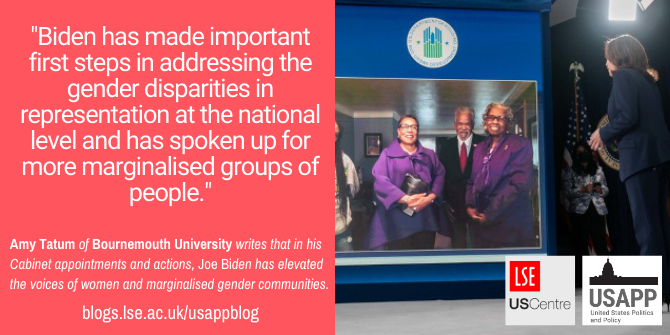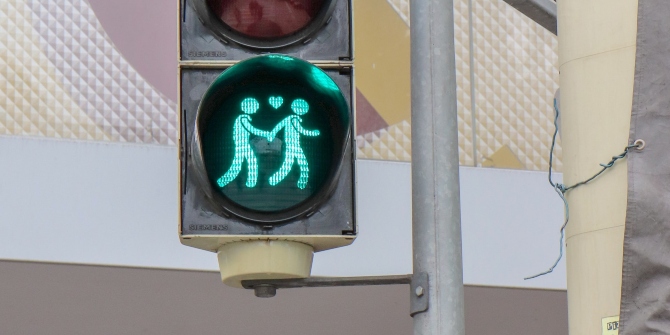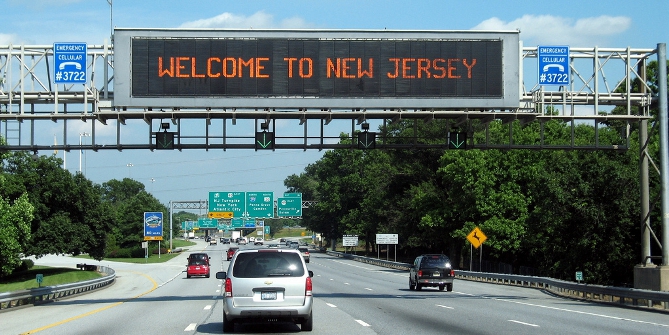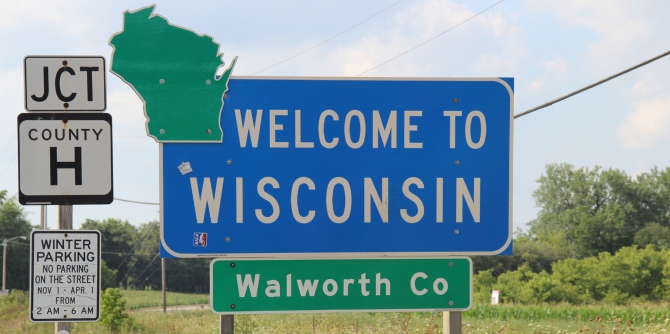 President Joe Biden’s administration is one of the most gender inclusive in history, with five women, including two women of color, in his Cabinet. Amy Tatum writes that through his appointments and other measures like Executive Orders and Proclamations, Biden is giving voice to women and marginalised gender communities.
President Joe Biden’s administration is one of the most gender inclusive in history, with five women, including two women of color, in his Cabinet. Amy Tatum writes that through his appointments and other measures like Executive Orders and Proclamations, Biden is giving voice to women and marginalised gender communities.
- Following the 2020 US General Election, our mini-series, ‘What Happened?’, explores aspects of elections at the presidential, Senate, House of Representative and state levels, and also reflects on what the election results will mean for US politics moving forward. If you are interested in contributing, please contact Rob Ledger (ledger@em.uni-frankfurt.de) or Peter Finn (p.finn@kingston.ac.uk).
When it comes to the topic of gender President Joe Biden has shown a marked difference from his predecessor, having assembled the most diverse Cabinet in United States history. It includes a record-breaking five women, two of whom are women of colour. Biden is supported by Vice President Kamala Harris, the first woman, Black and Asian American to hold the office. He has also become a vocal supporter and advocate for the trans and gender non-binary community since winning the 2020 election.
Biden’s moves toward a more gender inclusive administration have the potential for wide-reaching implications in policy making. His more diverse Cabinet is also important in terms of representation. Anne Phillips, in her important work Politics of Presence writes that one group cannot always represent issues of another due to a lack of inherent experience of that life lived. By assembling a more representative Cabinet and by taking more progressive stances on gender issues Biden is showing the American people that all women matter and that diversity of gender representation matters. He is giving a voice to women and marginalised gender communities.
Intersectional Appointments
As intersectional feminism tells us, all women do not have the same experiences and challenges. This is important when looking at Biden’s Cabinet and reflects the importance of diversity amongst women appointees. Biden has chosen a diverse group of women and placed them in vital roles. Deb Haaland became the first Native American Cabinet Secretary when Biden nominated her for Secretary of the Interior. Haaland is an enrolled member of the Pueblo of Laguna and has been a vocal advocate for Native communities. Her appointment to a Cabinet position gives representation at the federal level to communities often excluded from politics. Biden’s Cabinet also includes Marcia Fudge as Secretary of Housing and Urban Development. Fudge is a Black woman, former Member of Congress, and chair of the Congressional Black Caucus. She has spoken of her plan to address the racial inequalities within the housing system and dismantle the “barriers of injustice”. Haaland and Fudge are joined in the Cabinet by Gina Raimondo as Secretary of Commerce, Jennifer Granholm as Secretary of Energy and Janet Yellen as Secretary of the Treasury.
Yellen is another historical appointment for the Biden administration; the first woman to lead the Treasury. Biden placing a woman in the top fiscal appointment shows a progressive stance towards gender. Financial cabinet positions are historically the preserve of men and fall in to the agentic category of issues that, stereotypically, are thought of as more masculine. Biden’s decision to place a woman in the Treasury signifies his gender progressive credentials. The appointment of a diverse group of women to the Executive branch’s decision making body sends a signal that Biden holds women’s opinions in high regard and gives the opportunity for more substantial representation for women. Having these five women in the Cabinet, plus a Black and Asian woman in the West Wing, signifies strides forward in the role of women in political leadership in the United States.

“V20210310LJ-0586” by The White House is United States Government Work.
Trans-Rights
2019 saw hate crimes against trans and gender non-binary people rise by 20 percent in the United States and in 2020 the number of deaths of trans people was the highest since reporting started in 2013. The level of violence towards these marginalised communities is at unprecedented levels. In his victory speech Biden became the first president-elect to mention the trans community. He thanked the “broadest and most diverse coalition in history” for electing him and included trans people specifically. Biden backed up this historic mention on his first day in the Oval Office when he signed an Executive Order stating that all federal agencies should enforce the Supreme Court ruling that expands the definition of sex discrimination to include any discrimination that is based on sexual orientation as well as gender identity.
On March 31st 2021 Biden issued the first Proclamation to recognise Transgender Day of Visibility stating the day “recognizes the generations of struggle, activism, and courage that have brought our country closer to full equality for transgender and gender non-binary people”. The Proclamation acknowledged that more needed to be done for the trans community stating that the “crisis of violence” against trans women, and especially trans women of colour was a “stain on our Nation’s conscience”. Dr Rachel Levine also became the first openly trans person to be confirmed to a federal office in US history. Levine was confirmed by the Senate to the position of Assistant Secretary for the Department of Health and Human Services. The Biden Administration’s acknowledgement of the trans community and the challenges it faces have been wildly different from it’s predecessors and shows a change in the Executive Branch’s stanch on the rights and representation of trans and gender non-binary people in the United States.
Biden and Gender Beyond 100 Days
Biden has made important first steps in addressing the gender disparities in representation at the national level and has spoken up for more marginalised groups of people. His acknowledgement of the trans community has given voice to one of the most vulnerable groups in the US and shown they have a powerful ally in the White House. Biden’s Cabinet includes a diverse group of women, led by Vice President Harris. His administration is supported by a Congress that includes more women than ever before and a Supreme Court which has a historic three women Justices. It is important to remember that representation is more than just numbers, Professor Sarah Childs reminds us not to confuse women’s bodies with feminist minds. Whilst it remains to be seen whether they will provide substantive representation for women they are at least in the room where decisions are made and are giving a voice to women across America. The women in the Cabinet and the woman in the Oval office will need to show over the next four years how committed they are to gender equality and diversity. It will be up to Biden to lead on gender based initiatives and to continue to elevate the voices of women, trans, and gender non-binary people, but the early signs are hopeful.
Please read our comments policy before commenting.
Note: This article gives the views of the author, and not the position of USAPP – American Politics and Policy, nor of the London School of Economics.
Shortened URL for this post: https://bit.ly/3goNhG6
About the author
 Amy Tatum – Bournemouth University
Amy Tatum – Bournemouth University
Amy Tatum is a Doctoral Researcher in Women in Political Leadership Faculty of Media and Communication Bournemouth University.











